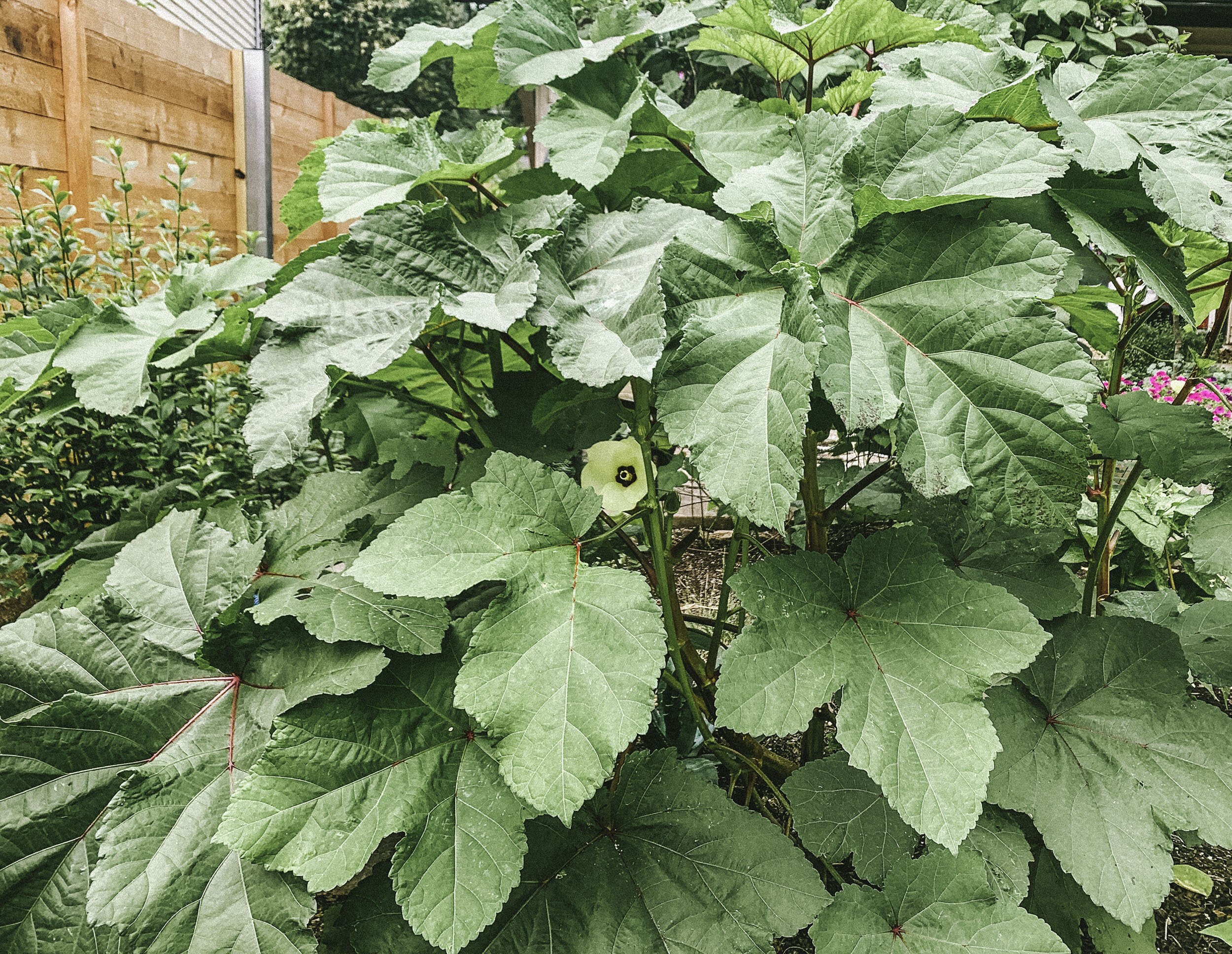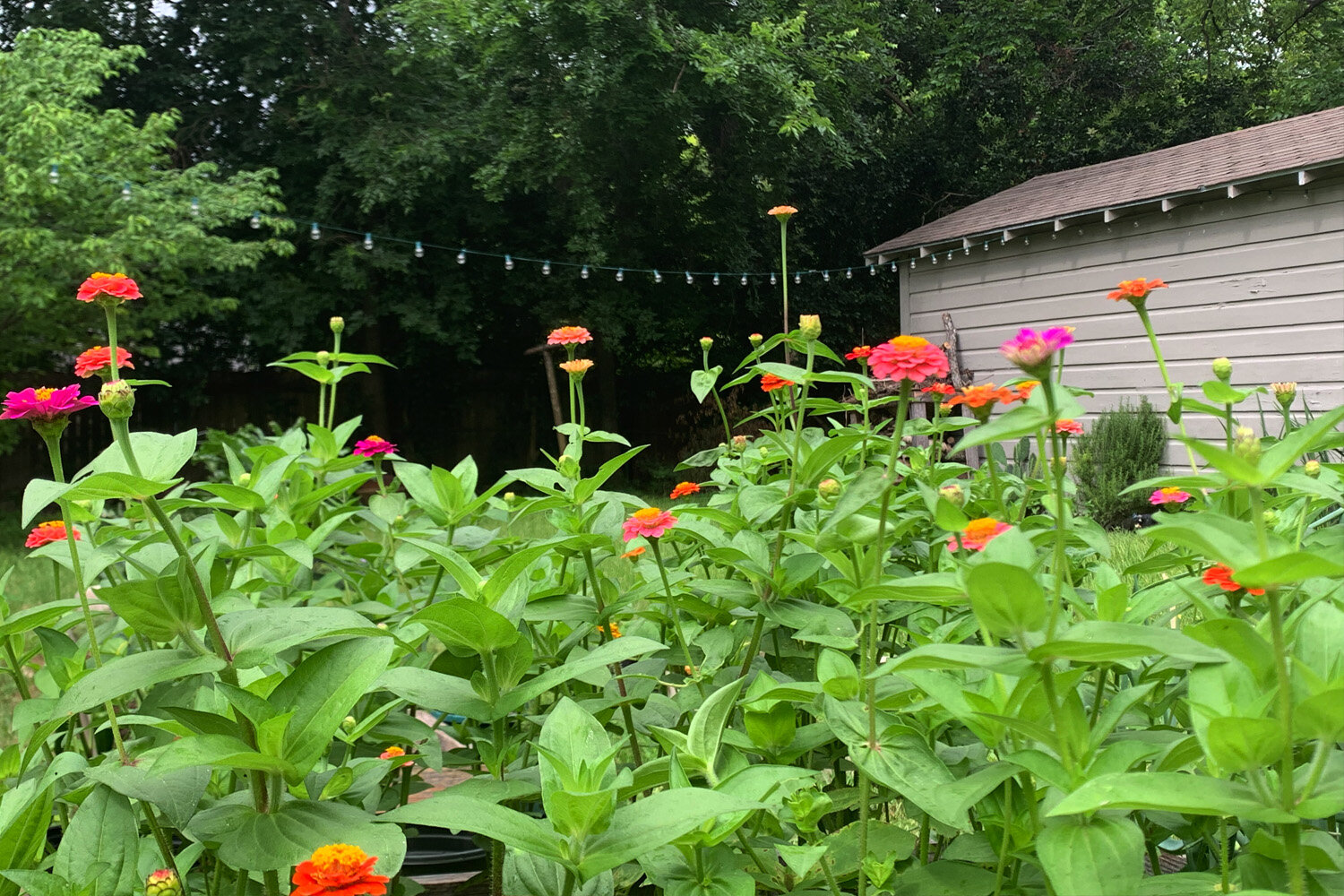What to Do in the Garden in July
If you made the commitment to garden though the summer in Texas, I salute you. You are one of the brave. Hopefully, you will have the salsa to show for it.
If there is one true thing about gardening in July in central Texas, is that you will probably want to give up. It’s crazy hot. It likely doesn’t rain at all, or we get a freak window where it rains for so many days in a row that when you see your garden again, it’s a jungle.
What I like about gardening in July is that it’s really just about maintenance. July is not a super active month in the garden. It is so hot that most plants will resent you if you do more than try to keep them alive. That’s plenty to do just keeping up with what you’ve already planted. Harvest all those tomatoes, peppers, eggplants, melons, cucumbers, and okra and cut flowers as soon as they are ready. If you’ve made it this long, July is a bounty. All you really need to do is reap the fruits of your labor, water deeply and thoroughly, and fight off pests.
What to do in your garden in July:
Keep pests and powdery mildew (PM) at bay.
You may be noticing a whitish or grayish substance coating some of your plants. That my friends, is powdery mildew, a common fungal disease in humid climates. It leeches nutrients from the leaves and inhibits photosynthesis. While it won’t kill your cucumber by itself, anytime a plant has one problem, it invites other problems. Use my Multi-Purpose Joy Max Soap Spray to treat it and knock out pests attracted by it at the same time. In my garden, when I go to treat my calendula for PM, frequently a little cloud of white flies will disperse as I do so. White flies seem harmless, but they will suck the leaves dry. Combined with PM, they really do a number on my poor marigolds. Don’t wait until the problems appear, be proactive. Especially on your zinnias, which are very prone to PM. I start spraying them when they are still tiny seedlings.You may also notice tiny “shotholes” in your eggplant, pepper, or tomato leaves. That means you have flea beetles. Add two cups of rubbing alcohol in your soap spray to treat them. Grasshoppers and leaf-footed bugs are best dealt with by knocking them into a bucket of soapy water or treating the plants they love with diatomaceous earth. They keep an eye on you and make a quick escape, so you may need someone else to hold the bucket and/or provide a distraction so you can knock them in before they get away.
Flea beetles left telltale “shotholes” in the leaves of this eggplant. Add two cups of rubbing alcohol in your soap spray to treat them early morning or after the sun fades in late afternoon.
Feed everything still alive and mulch around them if soil is exposed.
If your plants are starting to lose vigor, they probably need some extra nutrition. If you are doing all your gardening in containers, and you haven’t added any since you first planted them in March, it’s time to feed everybody again with some new compost and granular fertilizer. I used MicroLife fertilizer for this precise purpose. It comes in two, very generous and well-priced sizes. It contains all the trace minerals your plants need to thrive and billions of beneficial microbes. It’s basically super compost. My garden sprung to new life within days of spreading it out. I especially like it because it helps build the soil, which if you recall, is the real goal of the garden, in year one especially. The best time to do this is before you know rain is coming as it will filter through the food and down into the root zone and your plants will love it.
Start your no-dig beds for fall or create garden paths with the cunning use of cardboard.
I know it seems early but there’s time now to plan for the truly glorious time for Texas gardening (fall/winter). Start your no-dig garden beds by placing cardboard and newspaper down in layers to kill grass. The intense sun will do the work for you. You can also do this for garden paths: just cover your cardboard layer with mulch or leaves. A chip drop is good for this. For future garden beds, continually add new layers of organic material like leaves and table scraps (no meat no dairy) and regularly water it all in to keep it cooking and by the time fall arrives, the work will be almost done with barely any effort on your part.
Don’t go too hard. Be gentle with yourself. Wear sun protection. Stay hydrated.
Protect your tomatoes from squirrels with this genius solution
Larger green tomatoes are probably stalled out on the vine but you should still be getting steady cherry tomato harvests.
Thirsty squirrels will steal tomatoes for some refreshment. Putting out a bird feeder and a bird bath to distract them really helps. Now the birds are the ones that have to negotiate with them, not you. I see way less destruction as long as I keep the feeder full.
Tomatoes are one of the trickiest vegetables to grow in central Texas. So don’t worry if you aren’t a master yet, there is still time. I wrote about some troubles you may have with them here.
Multi-Purpose Joy Max Garden Soap Spray
You probably have the ingredients for this all-natural treatment for pests and powdery mildew in your kitchen.
PRO TIP: To avoid sun scald, only apply sprays to plants after the direct sun rays have moved off of them, or in the near dawn hours when they have time to dry before the sun reaches full power.
I hate killing grasshoppers as they are so cute when they are little and so formidable when they are large, but they will chew big holes in your zinnias and turn your calla lily leaves into ragged tatters. The easiest way to get them is to distract from one direction (you will notice that they watch you and hide on the far side of a stem) and bop them into a bucket of soap from their blind side. You may need an accomplice in this effort.
What to Plant this Month
Veggies: Corn (early July only), Eggplant (transplants), Warm-season Greens, Okra, Peppers (transplants), Black-eyed Peas (can be used as a cover crop), Pumpkin early July only (plant on July 4th for Jack-o-Lanterns in October), Tomatoes for the fall can be started from suckers.
If you need any guidance in growing your summer zinnias, the full grow guide is here.




